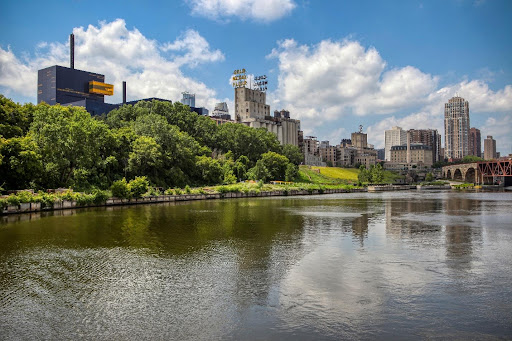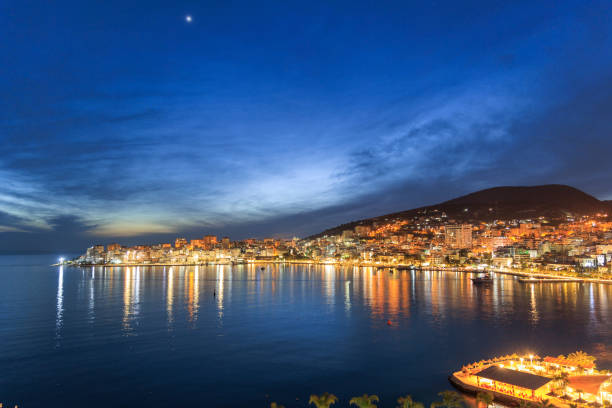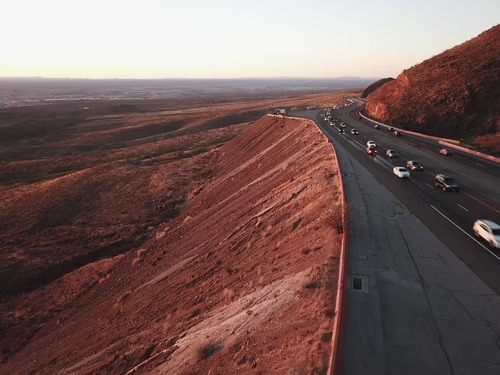Top 10 Mountains To hike In Nepal
You've seen the list of the world's most dangerous mountains and you're feeling adventurous. You've done Everest, the Grand Canyon and Kilimanjaro and you're ready for more. In this post,we’ll tell you about the top 10 mountains to hike in Nepal.
1. Mount Everest
Mount Everest is one of the most famous mountains in the world, and for good reason. It's not only a formidable challenge to climb, but it's also an incredible opportunity to see one of the most stunning landscapes in the entire world. The mountain itself lies on the border between Tibet and Nepal, with its base camp being located in Nepal. You can get there by taking an airplane or helicopter from Kathmandu Airport or Pokhara Airport.
If you're looking for a mountaineering experience that will test your physical limits while simultaneously showing you some of the most beautiful vistas on Earth, then Mount Everest is definitely worth considering as one of the top mountains to hike in Nepal!
2. Annapurna
Annapurna is one of the most popular mountains in Nepal, and it's not just because of its beauty. The mountain has become a symbol of pride and strength for the people who live there.
This mountain is also known as Annapurna I, which means “Goddess of Plenty.” Many people believe that the goddess lives inside this mountain and they pray to her when they climb it.
There are two ways to get to the summit: either by using ropes or by climbing without them. If you choose to use ropes, you'll need help from other climbers who've already made it up there before you. If you choose not to use ropes, then you'll need strong legs and lungs!
3. Langtang Lirung
The Langtang Lirung trek has been rated as one of the top mountains to hike in Nepal. The 8th highest peak in the world at 7,242 meters above sea level is located in the Langtang Himal region. This trek is one of the most popular treks in Nepal and offers outstanding views of Mt. Everest, Makalu, and Lhotse. The panoramic views from this high altitude trek will take your breath away!
This challenging trek allows you to explore some of Nepal’s most beautiful landscapes, including alpine lakes and forests with dense rhododendron bushes. Hikers will be rewarded with amazing views from high mountain passes (5,400 m), including Gokyo Ri (5,350 m) which offers an amazing view of Cho Oyu (8201 m).
Trekkers can also visit nearby villages and learn about local culture during this trip through remote parts of Nepal’s Himalayan regions.
4. Dhaulagiri Il
Dhaulagiri I, at 8167 meters (26,795 feet), is the seventh highest mountain in the world. It is located in the Dhaulagiri Himal region of Nepal and lies on the border with Tibet. It was first summited by a British expedition in 1960. The mountain has three peaks: west, central and east.
The peak of Dhaulagiri I is technically called G1 but most people refer to it as Dhaulagiri I. The first successful summit was made via the south-west ridge in 1960 by a British expedition led by Don Whillans and Chris Bonington (Bonington had been denied permission to climb K2). They followed a line that had been fixed by an Italian expedition in 1954.
G1 was named after Nanda Devi, who had been named after the wife of Lord Shiva. She was said to live atop this peak with her husband and son whenever he was away chasing demons. When he returned home from one such trip she decided not to let him know about it because she feared that if he found out about his son being born
5. Manaslu
It has a height of 26,759 feet above sea level, making it the eighth tallest mountain in the world and the tallest mountain in Nepal.
The mountain was named after the Hindu god Manasa and is located in the Mansiri Himal, which forms part of a large area of highlands called the Trans-Himalaya. The peak sits on the border between Nepal and Tibet and lies about 100 miles west of Mount Everest.
There are several routes for reaching Manaslu's summit, but most hikers travel through Tibet because it's cheaper and easier than hiking into Nepal from China. The normal route is divided into three sections: Base Camp at 16,000 feet, Camp 1 at 19,000 feet and Camp 2 at 21,500 feet. From there it's another 3 days to reach camp 4 at 23,000 feet before ascending to Camp 5 at 25,000 feet just below the summit ridge where you have to wait for good weather before attempting an ascent of this dangerous peak!
6. Ganesh Himal
If you’re looking for an adventure in the Himalayas, then you should visit Mount Ganesh Himal. It is a popular trekking destination for many tourists who come to Nepal.
Mount Ganesh Himal is located in the eastern part of Nepal and it is considered as one of the most spectacular mountains in the country. This mountain has four peaks and they are named as Sudarshan Peak, Ganesh Peak, Vishnu Peak and Lakshmana Peak.
If you want to experience snowfall in your life then this trekking route can help you with that. During the winter season, Mount Ganesh Himal receives heavy snowfall which makes this place even more beautiful.
Apart from being a popular trekking destination, Mount Ganesh Himal has some amazing views which you will surely love during your trip here. The beauty of this place cannot be expressed in words.
7. Gauri Shankar
It is located in the Annapurna region at an altitude of 7,554 meters above sea level. It is one of the most popular treks because of its easy accessibility and scenic beauty. The trail passes through thick forest, lush green forests and lush green forests that are home to many species of wildlife like deer, monkeys, birds and bears.
The trek starts from Besisahar and ends at Ghandruk which takes about 10 days to complete. On the way you will pass through villages like Tatopani, Ghorepani (2,840 m) and Poonhill (3,240 m). You can also visit places like Chomrong village (4,000 m), which has stunning views of snow-capped peaks such as Mount Dhaulagiri (8167 m) and Annapurna South (7219 m).
The trek can be started anytime between April and November; however it is recommended that you start early so that you have enough time to enjoy the beautiful scenery without having to rush back due to harsh weather conditions during winter months when snowfall makes transportation difficult.
8. Island Peak (Nepal)
Island Peak is a relatively short and easy hike, but it's definitely not for the faint of heart. The climb up to the summit is 2,860 meters, which means you'll gain an altitude of about 2,000 meters in less than a week. The average time it takes to complete this trek is 10 days, but if you are in good shape and have good equipment (including clothes, sleeping bags and mats), you can do it in six days.
The climb itself is pretty straightforward: there's one trail leading up to the summit. It's steep but manageable for most people who are physically fit enough. However, there are several dangerous spots on the trail where falling rocks can cause serious injury or death if they hit another person who's standing there at that moment.
The views from the top are absolutely breathtaking—you'll be able to see all across Nepal and into Tibet as well!
9. Mera Peak (Nepal)
Mera Peak is located in the Himalayas, in the Khumbu region of Nepal. It lies north of Everest and west of Kangchenjunga, between the valleys of Imja Khola and Lhotse Shar. This mountain was first climbed on October 19th, 1964 by an Austrian expedition led by Ludwig Purtscheller via the South Ridge. The ascent was made from Base Camp at 5300 meters up to 6500 meters and then along a snow ridge up to 7600 meters where it met the main summit ridge which leads to the top at 8046 meters above sea level.
The route has been repeated several times since this first ascent but none have been without incident as many climbers have been killed or injured while attempting it.
The easiest way to climb Mera Peak is to take a trekking company that offers expeditions there. There are some companies that offer this type of tour without having much experience with climbing mountains so it is important to select one with many years experience if you want to make sure your trip goes smoothly and safely.
10. Baruntse
The mountain has two peaks, east and west, which are connected by a saddle at 6,770 meters (22,199 feet). The peak on the west side was first climbed in 1960 by an expedition led by Nawa Sherpa and Harka Gurung.
The east summit was climbed later that year by a Swiss expedition led by Edouard Wyss-Dunant, who reached it via the north face and northeast ridge. The Rolwaling Himal range, which includes Baruntse, is located in northern Nepal close to the Tibetan border. It is considered one of the most inaccessible ranges in Nepal with many peaks over 7500 meters (24,600 feet) high including Kangchenjunga (8586 meters) at its northern end.
Baruntse means “Tiger” in Tibetan language which reflects its fearsome reputation as an extremely difficult place to climb. From Pokhara it takes about two days to walk along a trail that passes through beautiful villages and forested hillsides before reaching the base camp at 4100 meters above sea level.
We wish you all the best of luck on your trip to Nepal, and if you do not manage to get to all one hundred mountains, we hope that you at least find these ten peaks as memorable as the rest!
For more helpful and informative insights, visit here.





